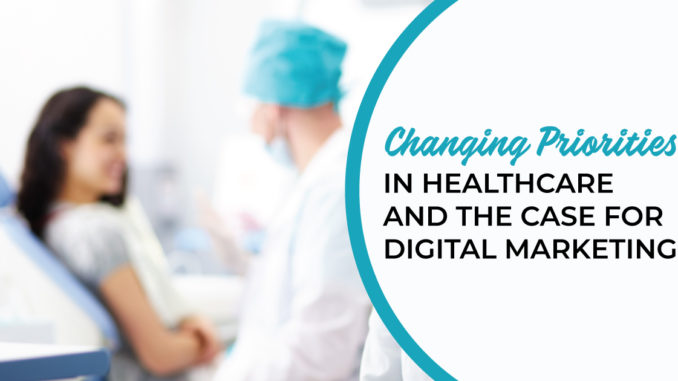
Health systems are changing their priorities in 2019. Over the years, health systems have been focused on driving down operational costs and leaving revenue growth on the back burner. According to research by the Health Care Advisory Board, this is no longer the case. The Research Annual Health Care CEO Survey, assessing the top strategic priorities for hospitals and health systems, reveals that healthcare systems are working to improve operational margin management after a reported all-time low of 1.6% margin in 2017, after operating expense growth outpaced operating revenue growth for two consecutive years. These extremely thin margins can be attributed to a strict focus on cost-control and declining patient volumes.
There is something to be said about controlling costs–especially for large-scale, intricate health systems with an abundance of variable expenses. In this year’s survey, cost containment was tied for third priority with 13 percent of votes by C-suite executives. Compared to last year’s 24.5% and number one ranking, it is clear that there has been a large shift in priority. Controlling costs is a mandatory part of maintaining a well-operated business but can only do so much for the long-term financial viability of a health system. In order to keep up with the growing competition, health systems must prioritize increasing patient traffic and revenue.
Because these factors are industry-wide, rather than ebb and flow of the economy, 2019 marks the year that health systems address these challenges and step up their marketing efforts. In order to increase revenue and address declining patient numbers, health systems must address how they gain exposure. Traditional forms of media (i.e, print, television, or direct mail) have led healthcare companies’ endeavors for exposure and brand awareness for years, but to capture the right audiences, companies are moving their advertisements onto potential patient’s screens rather than the billboards around them. This is appropriate because 76 percent of consumers use the internet to make their healthcare provider decisions rather than traditional media outlets. Digital marketing tools sit at the perfect intersection of cost-effectiveness and measurable growth, and this is extremely attractive for an industry that is changing their priorities and how they utilize their purchasing power. By channeling more effective advertising platforms and using their marketing budgets more effectively, the money spent by health systems can have a measurable impact on the number of patients treated and their long-term revenue growth.
Cost containment still remains a major strategic priority for health systems, and many traditional cost-saving tactics will continue into 2019 and onward. What is more important is that healthcare systems can no longer focus on cutting corners and saving dollars here and there. To parallel these industry-wide shifts, individual healthcare brands must rethink how they use their short-term spending in regards to its long-term financial viability. Instead of being seen as another cost to be cut, marketing budgets and digital ad spend need to be considered investments for short-term and long-term growth. The costs of ineffective advertising should continue to be cut in 2019 if health systems want to stay ahead of the competition. By strategically redirecting these dollars to growth investments, such as digital marketing, healthcare brands can expect to see lasting impacts on their overall trajectory and revenue growth.
